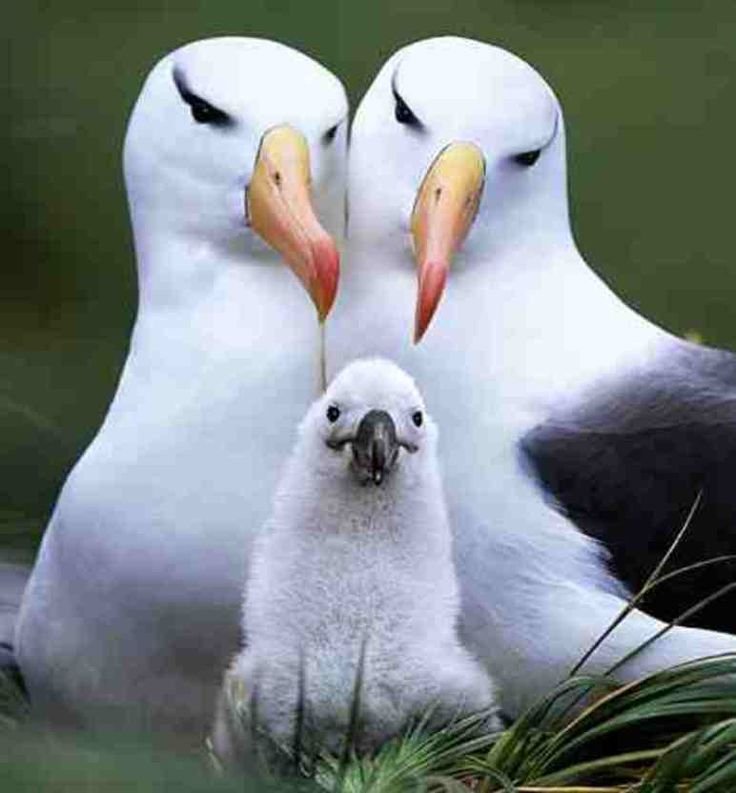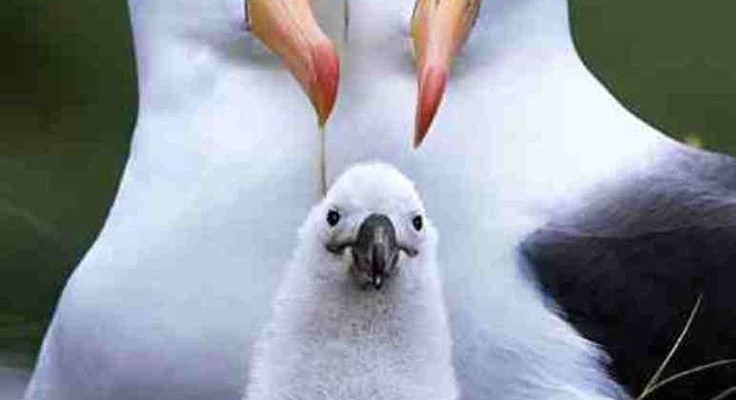
So, let’s embark on a little journey, exploring ten animals similar to the albatross and how you can easily tell them apart. This isn’t just a bird-watching guide; it’s like a fun scavenger hunt in nature. You’ll learn about other birds that share the same oceanic lifestyle, impressive wingspans, or even feeding habits, while also picking up some neat tips on distinguishing between them. Ready? Let’s dive in!
1. Wandering Albatross
The wandering albatross is often considered the closest relative to the classic albatross. With a wingspan that can reach up to 12 feet, these birds are the true giants of the avian world. Their vast wings allow them to fly long distances without flapping, just gliding above the waves.
You can identify a wandering albatross by its distinct white and black plumage. The mature birds have a mostly white body, while their wings have black edges. Juveniles, on the other hand, look a bit scruffier with mottled brown and white feathers. So, if you ever see a big bird soaring and floating effortlessly over the ocean, take a closer look—you might be witnessing one of these magnificent wanderers.
2. Laysan Albatross
Next on our list is the Laysan albatross, which stands out for its striking features. While it may not have the wingspan of its wandering cousin, it’s still an impressive bird. Adults typically have a darker back and grayish head with beautiful white faces.
One key way to tell the Laysan albatross apart from others is by its unique bill shape. Unlike the broader bill of the wandering albatross, the Laysan’s bill is narrower with a more pronounced hook at the end, perfect for catching fish. These birds are also known for their amazing courtship dances, which can be a delightful sight on the breeding grounds.
3. Northern Fulmar
You might be surprised to learn about the northern fulmar. While it’s not an albatross, it shares some similarities. These birds are also excellent fliers, capable of covering vast distances and are often found in the North Atlantic and North Pacific.
If you spot a northern fulmar, look for its compact body, which is smaller than that of the albatross. They have a characteristic gray and white color pattern and a stout, straight bill. One fascinating thing about fulmars is their ability to drink seawater, thanks to specialized glands that filter out salt. Now that’s a cool little survival trick!
4. Black-browed Albatross
Another relative you might come across is the black-browed albatross. These birds are known for their striking black brow over the eye, which gives them a more serious look. They are medium-sized compared to other albatross species, but what they lack in size, they make up for in gracefulness.
In terms of behavior, black-browed albatrosses are quite social and often seen in large groups during feeding. They have a unique feeding strategy that involves following fishing boats to catch scraps thrown overboard. If you notice a bird diving and appearing to engage in synchronized movements with others, you might just be observing this clever bird.
5. Southern Royal Albatross
Meet the southern royal albatross, known for its elegant appearance and impressive wingspan that can rival even the wandering albatross. These birds are mostly white with some black and brown detailing on their wings.
What’s fascinating about the southern royal albatross is its breeding habits. They only breed on a few islands, and the process can take years for them to select a mate. When you spot one, keep an eye out for its distinctive wing flapping style—more pronounced than some of its relatives.
6. Shearwaters
Though shearwaters are different from albatrosses, they share some traits that make them quite similar. They are medium-sized seabirds often seen in the same oceanic areas. With their slender bodies and long wings, they adapt well to flying over waves effortlessly.
To differentiate shearwaters from albatrosses, observe their flight patterns. Shearwaters tend to flap their wings more frequently and have a more erratic flying style. One common species, the great shearwater, has a striking dark brown back and lighter underparts, making them easy to spot when they’re skimming the surface of the water.
7. Giant Petrel
Giant petrels are another seabird that shares the pelagic lifestyle with albatrosses. However, they have a sturdier build and a more robust bill. These birds are often found in the southern seas and are known for their scavenging habits, often following fishing boats like the black-browed albatross.
When identifying giant petrels, you’ll notice their larger size and a more muted color palette of gray and brown. Their long wings help them glide over the ocean, but they often appear more aggressive, especially when fighting for food. It’s a wild world out there on the water!
8. Petrel
The petrel is another ocean bird that often gets confused with albatrosses. While they share similarities, petrels are generally smaller and have a rounder body shape. You can find them diving down for food or skimming the ocean surface.
To tell them apart, look at their wings. Petrels have shorter, more pointed wings compared to the broad wings of albatrosses. Their coloring tends to be less stark as well, with various shades of gray, brown, or white. Watching petrels take off from the water can be a delightful experience, as they often make a splash when launching into flight.
9. Storm-Petrel
Finally, let’s talk about the storm-petrel. These tiny birds are often referred to as “the butterflies of the sea” due to their small size and agile flying style. Although they are closely related to the petrels, they are much smaller than albatrosses.
You can identify storm-petrels by their distinctive fluttering flight—imagine a little bird dancing over the water. They often have a dark body and a white patch on their wings or tail. While they might not have the presence of an albatross, their charm and grace make them a joy to watch.
10. Spotted Dove
While this bird might seem out of place on our list, the spotted dove has a unique coastal lifestyle reminiscent of the albatross. These ground-dwelling birds are commonly found near beaches and coastal areas. They aren’t seabirds per se, but they share an affinity for the same habitats.
You can distinguish spotted doves by their distinctive spotted nape and smooth, gentle call. They are not as grand as albatrosses but are often seen fluttering near seaside habitats, making them an enjoyable part of the coastal ecosystem.
In conclusion, while the albatross might steal the show with its massive wings and graceful flights, the world is full of fascinating birds that share its oceanic niche. Recognizing the differences can enhance your bird-watching experience and deepen your appreciation for nature. Next time you spot one of these birds, you’ll have a richer story to share over coffee, making your love for wildlife just a little more connected.

